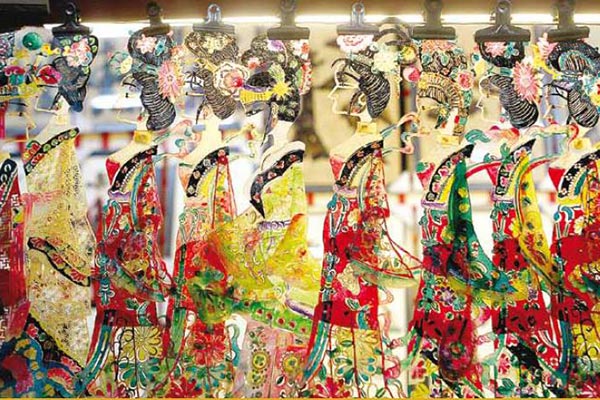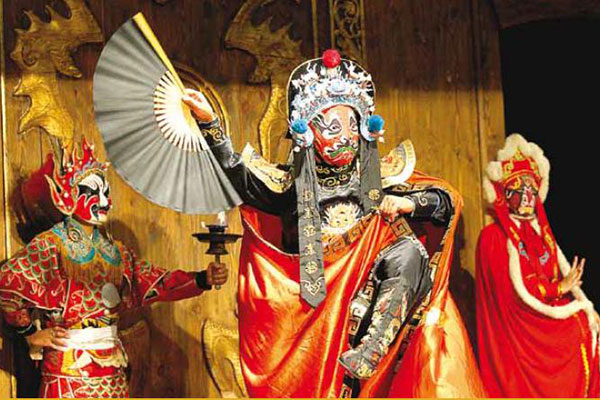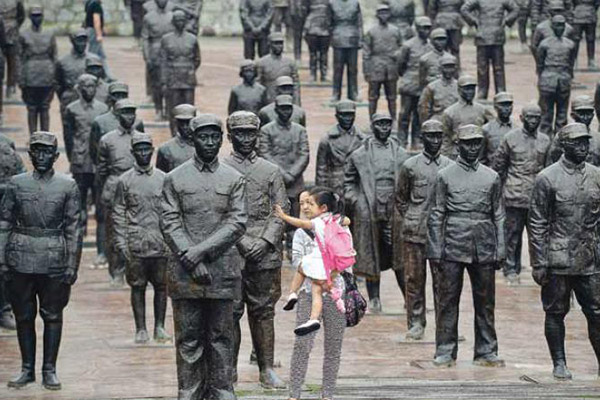
Shadow play puppets. The authorities are paying great attention to preserving Chengdu’s cultural heritage.[Photo/China Daily]
Situated at the bottom of the Sichuan basin, Chengdu is largely separated from the rest of China by formidable mountain ranges and rivers. Its fertile soil and warm and moist climate makes it, together with seven nearby cities, accounting for 40 percent of the population and 60 percent of the economy in the province, a land of milk and honey that is second in the country only to the Yangtze River Delta.
When the east and middle of China are shrouded by smog, Chengdu is one of the few large cities free from the stifling smog. Its residents’ contented lifestyles offer a sharp contrast to the fast-paced life of their counterparts in Beijing and Shanghai.

Jincheng Lake, one of the largest in Chengdu. Local authorities seek a balanced growth mode that maintains economic growth momentum while preserving the eco-system.[Photo/China Daily]
According to a survey by the Asian Development Bank, Chengdu topped a list of 33 major Chinese cities in environmental terms.
Chengdu has natural, historical and economical advantages to keep clean and tidy, even if some of those advantages have been regarded negatively during the past 30 years after China started reform and opening-up.
The city is located on the eastern border of the Tibet plateau, one of the cleanest areas in the world and a national environmental and cultural treasure for China. Chengdu is the first large city through which many rivers flow from the plateau, and commercial entities exist upriver.

Dujiang Weir, the oldest functioning water-control project in the world, has been in existence for nearly 2,300 years and diverts water to irrigate nearly 70,000 hectares of farmland.[Photo/China Daily]
Although the provincial capital is home to some renowned heavy industry enterprises, most were built deep in the mountains, as part of a national defense program to protect China’s industries from possible attacks by the former Soviet Union in the north.
A healthier lifestyle, booming commerce and trade and convenient water transportation within the basin gave birth to a much larger business population in the service sectors of Chengdu than in many other Chinese cities.
As other Chinese cities are trying to weed out their overcapacity polluting sectors and develop modern service industries, Chengdu is paying more attention to attracting research and development departments of high-tech industries. To some extent, Chengdu was spared the dirtiest phase of Chinese cities’ recent development history, where the emphasis was on GDP growth.

The Broad and Narrow Alleys, one of Chengdu’s three well-preserved historical areas, is a must-see on any tourist’s itinerary.[Photo/China Daily]
Chengdu residents have respect for traditional techniques and are dedicated to using their skills and working hard to improve their city, negating any need to migrate anywhere other than their home, dubbed a “heavenly place” since ancient times.
During the Tang Dynasty (618-907), locals invented and widely used block-printing techniques. They also used the first paper currency in human history and established a networked financial system during the Song Dynasty (960-1279).
Chengdu has 5,000 years of civilized history and the culture is unique to the local natural environment and multiethnic religions. Respect for nature is in the blood of the locals.

A teahouse in Chengdu. The city is famed for its relaxed and laid-back atmosphere.[Photo/China Daily]
Residents built the Dujiangyan water works in the upper reach of the Yangtze River to harness floods, irrigate farmlands and facilitate transportation in the Qin Dynasty (BC221-BC206). Dujiangyan still functions well today.
Chengdu residents pioneered many environmental protection practices in China.
Downstream governments provide compensation for upstream residents to not pollute the waterways.
Local authorities earmarked nearly 30 percent of the territory that encircles the city as a natural preservation area, while many other cities have sold similar land to real estate developers or to build industrial parks. Chengdu also plans to establish an ecological water system consisting of six lakes and eight wetlands in and around the city.

A worker makes spicy sauce. The city is well known for its spicy food.[Photo/China Daily]
The environmental protection authorities are alert and responsive to people’s complaints about environmental pollution cases. They use all channels, including social media, to access the concerns of local residents. Wenjiang, a district of Chengdu, may be the first region in China to succeed in categorizing its trash to monitor residents’ carbon footprint, thanks to the support of residents.
Last September, officials in Wenjiang district, a renowned eco-destination in the west of Chengdu, signed an agreement with the Chinese Ecological Civilization Research and Promotion Association to make the area a special experimental zone to develop an ecological civilization. By 2020, the district is expected to become a model for ecological civilization construction in China.
The Chengdu government said it will continue to make good use of its environmental tradition and new technology to turn the city into an eco-friendly city model. Becoming a low-carbon user, a new energy utilizer and a smart city will be the direction of its future development, according to the city’s development plan.

“Changing faces” is a characteristic feature of Chuan Opera.[Photo/China Daily]

The privately-run Jianchuan Museum Cluster.[Photo/China Daily]
